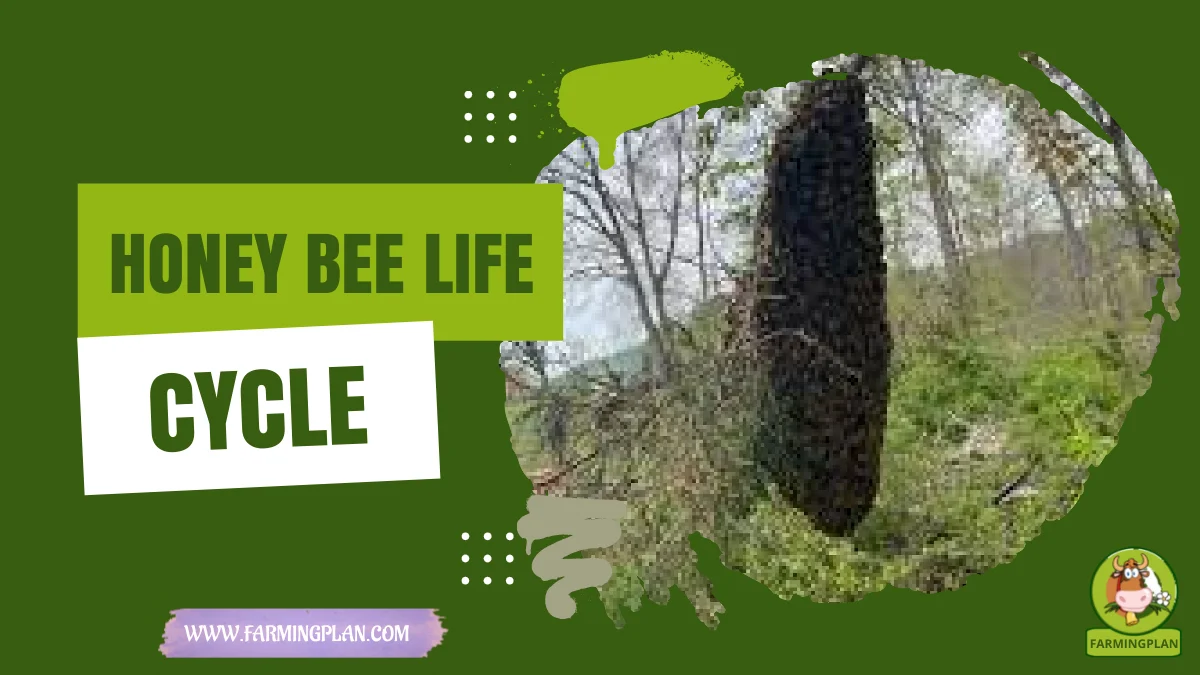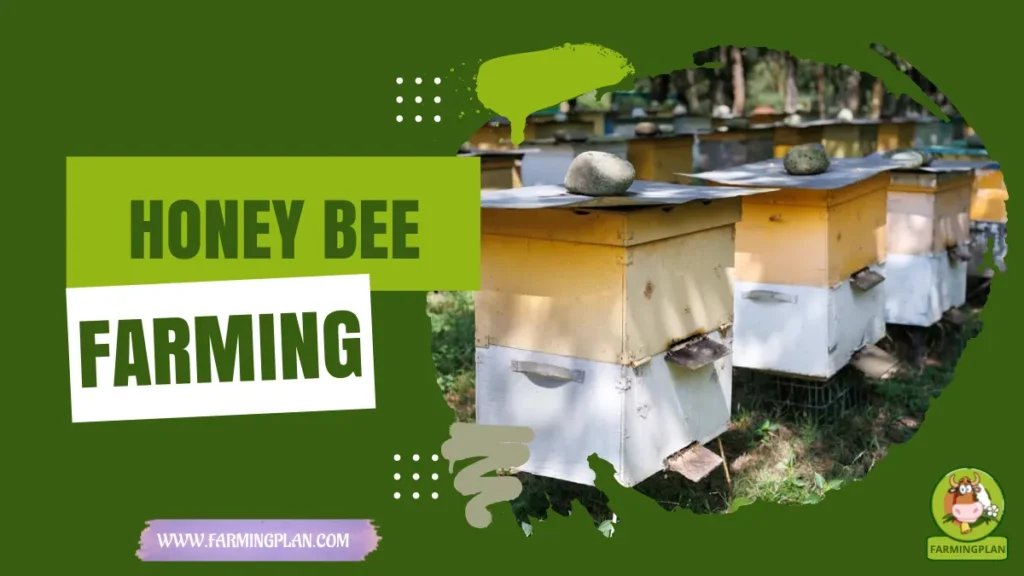Hey there! Bees, those tiny creatures buzzing around your garden, are not just fascinating to watch, but they also play a crucial role in our ecosystem. Have you ever wondered about the intricate honey bee life cycle—how they grow, what roles they take on, or how their tiny lives shape the world around us? In this article, I’ll walk you through the full cycle of a honey bee’s life, from egg to worker to queen. Whether you’re a curious farmer, a new beekeeper, or just someone who loves these buzzing wonders, you’ll find this guide full of easy-to-understand info, expert tips, and plenty of bee-life secrets. Let’s dive into the hive!

History & Origin of Honey Bee Life Cycle
Bees, these tiny marvels, have been a part of our world for millions of years. Fossil evidence takes us back to the Cretaceous period, a time when bees were already buzzing around, long before the dinosaurs vanished. The modern honey bee (Apis mellifera) is believed to have originated in South and Southeast Asia, then journeyed across Europe, Africa, and eventually to the Americas through human migration.
In ancient Egypt, honey bees were sacred. Egyptians used honey in medicine, mummification, and even as offerings to gods. Greek and Roman cultures also revered bees for honey production and wax. Fast-forward to the Middle Ages, monks in Europe started practicing organized beekeeping inside wooden hives, making it easier to harvest honey and wax.
Today’s beekeeping owes much to 19th-century innovations, like the invention of the movable frame hive by Rev. Lorenzo Langstroth. This changed how we manage bees, observe the bee life cycle, and collect honey without destroying colonies. Pretty neat, right?
Read More: Bleu de Gascogne Dog – The Noble French Hound You’ll Love
Characteristics of Honey Bee Life Cycle
Honey bees are small but mighty! Worker bees, the ones we usually see, measure around 1.2 to 1.5 cm. Queens are slightly longer with a more pointed abdomen, while drones (males) are chunky and don’t have stingers. Their body is divided into three parts: head, thorax, and abdomen. Covered in fine hairs, bees collect pollen as they move from flower to flower.
Their legs have special “pollen baskets,” and their compound eyes help them detect UV light and shapes. They communicate using a special “waggle dance” to show food directions. Plus, their roles change with age—from nurse bees to foragers. Each stage in the honey bee life cycle determines what job they’ll do. Isn’t that fascinating?
Nature & Temperament of Honey Bee Life Cycle
Honey bees are social insects. A single hive can house 20,000 to 80,000 bees—imagine that level of teamwork! Every bee has a purpose, and they rarely show aggression unless the hive is threatened. Worker bees are gentle and hardworking. Queens spend their life laying eggs, while drones live only to mate with queens during mating flights—more on that later.
Bees prefer calm, predictable environments, which is why we always keep hives away from heavy traffic and loud noise. I’ve noticed over the years that with gentle handling and proper hive inspections, bees rarely sting. They just want to get their job done—gather nectar, make honey, and keep the colony strong. Talk about dedication!
Food & Diet of Honey Bee Life Cycle
Honey bees mostly feed on nectar and pollen. Nectar gives them carbs, while pollen provides protein and fats—both essential for energy and hive development. Worker bees store nectar in their “honey stomach” and bring it back to the hive where it gets turned into honey. Larvae are fed royal jelly at first. If a larva is chosen to become a queen, she keeps eating royal jelly.
Worker larvae switch to a mix of honey and pollen. Drones are mostly fed by nurse bees. Avoid exposing your bees to pesticides, herbicides, or chemical-treated plants. Always make sure there’s clean water nearby. I also supplement my hives with sugar syrup during times when flowers are scarce—it helps maintain a strong brood-rearing cycle.
Usage & Purpose of Honey Bee Life Cycle
But bees are not just about honey, although that’s a sweet bonus. Their true superpower lies in pollination. A staggering 75% of the world’s flowering plants and over 30% of our food crops depend on bees. That includes apples, almonds, cucumbers, and more. Bees are not just workers, they are the unsung heroes of our ecosystem. In farming, bees help increase crop yield and quality.
Many farmers, myself included, place hives near orchards and vegetable fields to boost pollination naturally. And don’t forget about beeswax—it’s used in candles, cosmetics, and polishes. For hobbyists, bees are fascinating creatures to watch. Observation hives are a great educational tool for schools and nature centers. And for pet owners with large gardens, hosting a hive can bring your yard to life!
Special Features of Honey Bee Life Cycle
One of the most unique things about honey bees is how organized their hive is. Each bee has a role and follows it like clockwork. Here are some cool highlights:
- Royal jelly determines the queen’s fate.
- Worker bees switch jobs with age—from cleaning cells to guarding the hive.
- Queens can lay over 1,500 eggs a day!
- Bees use hexagonal wax cells to store honey, pollen, and brood—perfect for space and strength.
- A forager bee can visit over 2,000 flowers a day!
And did you know that worker bees have special enzymes in their saliva to turn nectar into honey? Bees are tiny, but they’re absolutely brilliant.
Health Issues & Prevention of Honey Bee Life Cycle
Healthy hives are happy hives. But like any animal, bees can face health challenges. The most common issues include:
- Varroa mites – tiny parasites that weaken bees and spread viruses.
- Nosema – a fungal infection affecting digestion.
- American Foulbrood (AFB) – a bacterial disease that kills larvae.
- Colony Collapse Disorder (CCD) – when most worker bees disappear mysteriously.
To prevent problems, I recommend:
- Regular hive inspections (at least once every 7–10 days).
- Keeping your hives clean and well-ventilated.
- Using screened bottom boards and essential oils (like thymol or wintergreen).
- Quarantining new colonies before introducing them.
Prevention is always better than cure—trust me, catching issues early saves both time and bees.
Read More: Blanc de Termonde Rabbit – A Hidden Gem For Meat & Companionship
Step-by-Step Beekeeping & Hive Management Guide
Keeping honey bees is incredibly rewarding. You get honey, help the environment, and learn so much about nature. Here’s how I guide new beekeepers through the process.
Step 1: Choose The Right Location of Honey Bee Life Cycle
Pick a spot with plenty of flowers and water sources nearby. Avoid windy areas and place hives facing morning sun. Shelter them from harsh weather and keep them away from pets or heavy foot traffic. I like placing mine behind hedges or fences for natural protection and privacy.
Step 2: Buy Your Hive & Equipment of Honey Bee Life Cycle
You’ll need:
- A Langstroth hive with brood and honey supers
- A smoker, hive tool, and bee brush
- Beekeeper suit with gloves and veil
- Feeder (for sugar syrup or supplements)
Go for high-quality woodenware and inspect for cracks or mold before using. Trust me, cheap gear breaks easily and frustrates you later.
Step 3: Order Your Bees of Honey Bee Life Cycle
Start with a nucleus colony (nuc) or a package of bees with a mated queen. Spring is the best time. Introduce them into the hive gently. Give them a day to settle before you do your first inspection.
Step 4: Monitor Brood Development of Honey Bee Life Cycle
Check for eggs, larvae, and capped brood. A solid laying pattern means your queen is doing great. Be sure to look for signs of pests or diseases during each inspection. I log notes after every visit to track progress.
Step 5: Harvest Honey Responsibly of Honey Bee Life Cycle
Once the honey supers are full and capped, it’s harvest time! Use an uncapping knife and extractor, or crush and strain. Always leave enough honey behind for the bees—especially for winter. Please don’t be greedy; they need food too!
Step 6: Prepare For Winter of Honey Bee Life Cycle
In colder climates, insulate your hives and reduce entrances to keep out drafts. Feed sugar syrup in fall if stores are low. I wrap my hives with breathable covers and add moisture boards to control dampness.
Expert Tips & Best Practices of Honey Bee Life Cycle
Here are my go-to tricks that have saved me time and bees:
- Always wear your suit—bees get cranky on cloudy days.
- Mark your queen with a colored dot to find her easily.
- Don’t open hives in the rain or wind—it stresses them out.
- Plant pollinator-friendly flowers near your hives (like lavender, clover, and sunflowers).
- Rotate frames to prevent disease build-up.
Tip: “Work Slowly Around Your Hive—Bees Can Sense Your Calm Energy.”
FAQs
How long is the honey bee life cycle?
It takes around 21 days for a worker bee to develop from egg to adult. Queens take about 16 days, and drones need about 24.
What are the stages in a bee’s life?
There are four main stages: egg, larva, pupa, and adult. Each bee caste (queen, worker, drone) has a slightly different timeline.
What is royal jelly, and why is it important?
Royal jelly is a special secretion fed to all larvae for the first three days. Future queens continue to eat it, which helps them develop reproductive organs.
How do bees decide who becomes queen?
Worker bees choose a few female larvae and feed them only royal jelly. This triggers changes in their body, turning them into queens.
Do bees die after they sting?
Only worker bees die after stinging humans or animals, as their stinger gets stuck. Queens can sting multiple times but usually use it only against rival queens.
Conclusion
Understanding the honey bee life cycle helps us better care for these amazing insects that do so much for our farms and gardens. From the queen’s first egg to the worker’s final flight, every step is vital. With a little care, observation, and curiosity, we can raise thriving colonies and support the environment all at once. Whether you’re new to beekeeping or already buzzing with experience, there’s always something new to learn from these tiny teachers. So why not start your own hive adventure? Please share this post, drop your questions in the comments, and let’s keep the buzz alive together!

